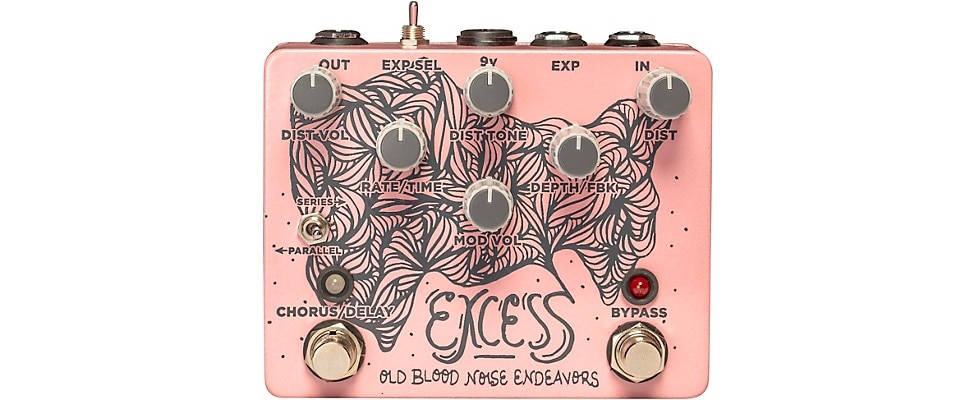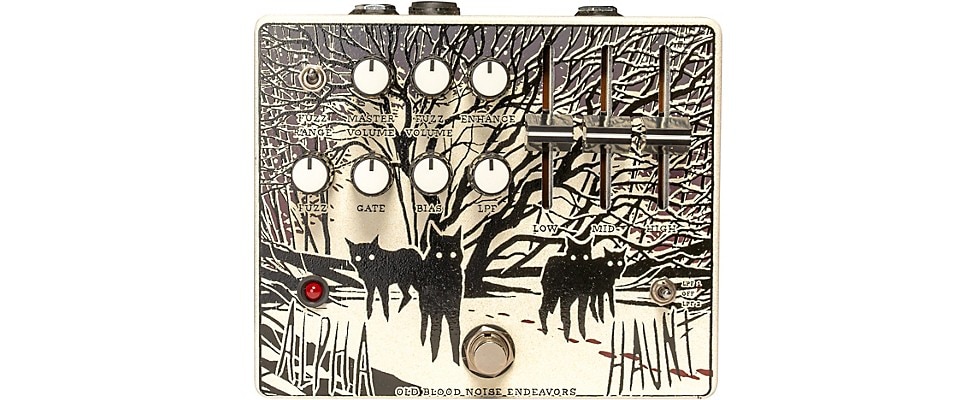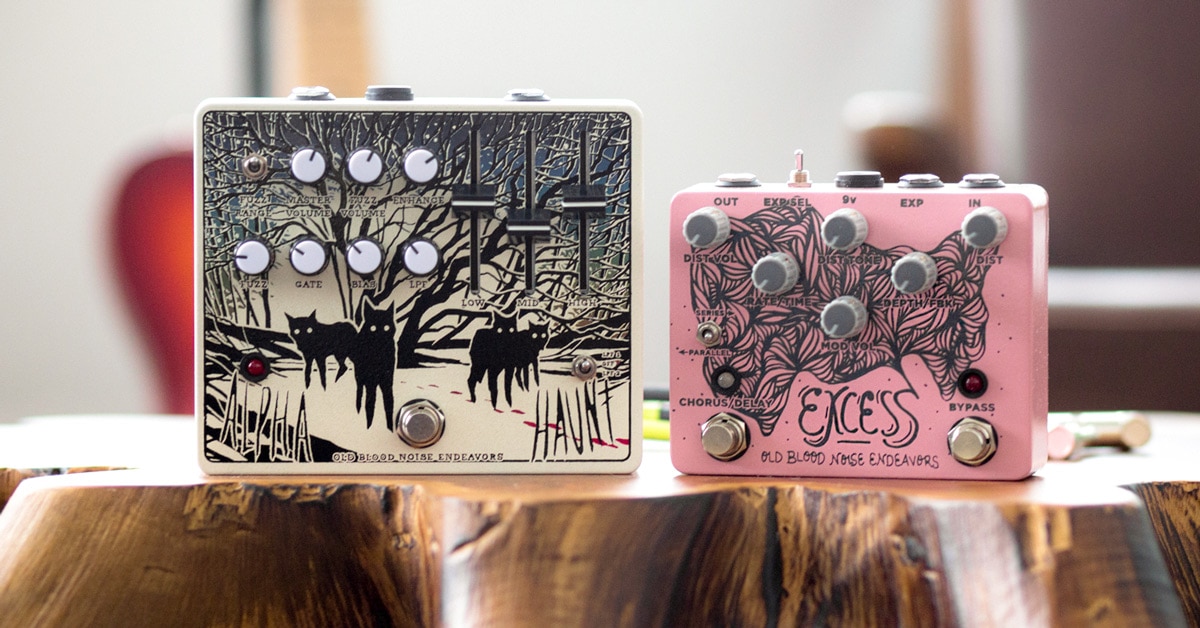Written by George Van Wagner, Musician's Friend Staff Writer
Let’s get dirty. Not overdrive, polite dirty, but distortion and fuzz nasty dirty. Old Blood Noise Endeavors (hereafter referred to as OBNE), located just outside Oklahoma City, an area that has become a hotbed of innovative effects pedal developers, have a couple things to say on the matter. Musician’s Friend gave me a chance to spend some quality time recently with a slew of OBNE’s latest, including the Excess, a distortion pedal with a chorus and flanger built in, and the Alpha Haunt, a fuzz pedal that offers more control than I had thought feasible in a (relatively) simple fuzz box. Let’s take a little closer look.
Nothing Exceeds like Excess
The Excess pedal starts off as a fairly straight-ahead, really great-sounding distortion pedal. Three knobs control the amount of gain, tone and overall volume of the distortion. But that wasn’t enough for the folks at OBNE. They added on chorus and flanger time-based modulation effects with Rate (speed)/Time and Depth/Feedback controls. If you’re not all that hip to the controls on a chorus or flanger, the Rate and Depth apply to the chorus side and the Time and Feedback are for the flanger side. You can switch between the two with the left-hand footswitch, and run either in series, with the distortion feeding the modulation effects (like running a distortion pedal into a modulation pedal) or in parallel (like splitting your signal and running the two side by side, then recombining the two signals) via a mini toggle switch, located just above the left-hand footswitch. When in parallel mode, you can even turn down the volume of the distortion to make it simply a nice-sounding modulation pedal, or vice versa for a pure distortion. It’s what happens when you start to play with these various combinations that earns the pedal its name.
With lower Rate/Time and Depth/Feedback settings, there’s just a hint of the modulation effect. There's also a “hidden” (well, it’s called out in the manual, if you read it, but, hey, we’re adventurers here) feature of a pitch shift on a delay that the flanger setting delivers at the most extreme feedback setting. The shift is preset to a perfect fifth and makes for a very cool effect, especially if you set the internal switch so that the expression pedal controls the feedback knob, and you can roll right into that shifted sound, then back off to a near infinite repeat of the delays that create the flanger’s resonance. There’s some very trippy stuff in here, and I could probably spend a couple more weeks finding interesting things to do with it, but I’m told they want it back.

Fuzz for Days
The Alpha Haunt fuzz pedal is one of the most tone-shapeable fuzz pedals I’ve ever encountered. With seven knobs, three sliders and two mini toggles for controls, it can take a little time to get totally dialed in to this one, but when you do, the results are well worth it. Let’s first take a look at what all those controls do.
To begin with, you have the basic controls you’d expect—Volume, Fuzz, and an LPF (low-pass filter) tone control. There are actually two volume knobs here, one a master volume that controls overall level and the second specifically for fuzz volume. This particular knob works in conjunction with the Enhance knob, which adds some clarity back into the sound by blending in a boosted, but still relatively clean, signal (OBNE calls it “a clean boost gone wrong”) parallel to the fuzz. The other two knobs are Bias and Gate. Maxing out the Bias knob takes you into that spitting, snarling, “not quite sure if this thing is going to blow up or not,” world. Adding extreme Gate settings can make it start to get very staccato and “kill-switch-ey” while serving the double purpose of keeping the incredible amount of gain that you’re putting in your signal chain from creating a massive dose of 60-cycle hum blended with local radio stations that routes through your amp.

The Filthy Truth
As with all the other OBNE pedals I’ve had my hands on, the Excess and the Alpha Haunt step beyond the run of the mill. They seem aimed at the musician who is dedicated to exploring new sonic spaces and isn’t satisfied with just another spin on a classic circuit. Both of these pedals fall into that category, which appears to be a unique approach in the world of distortion and fuzz. For players and producers who live to take sound and twist its tail until it yells, “Uncle,” these are boxes that, though they make take a little digging to get to it, are loaded with sonic gold.







































































































































